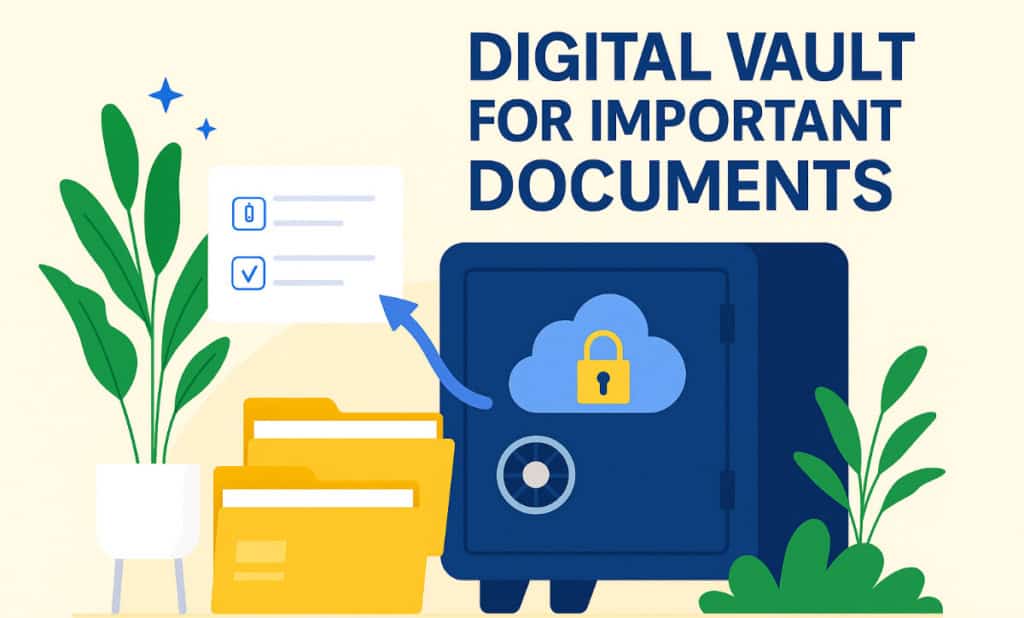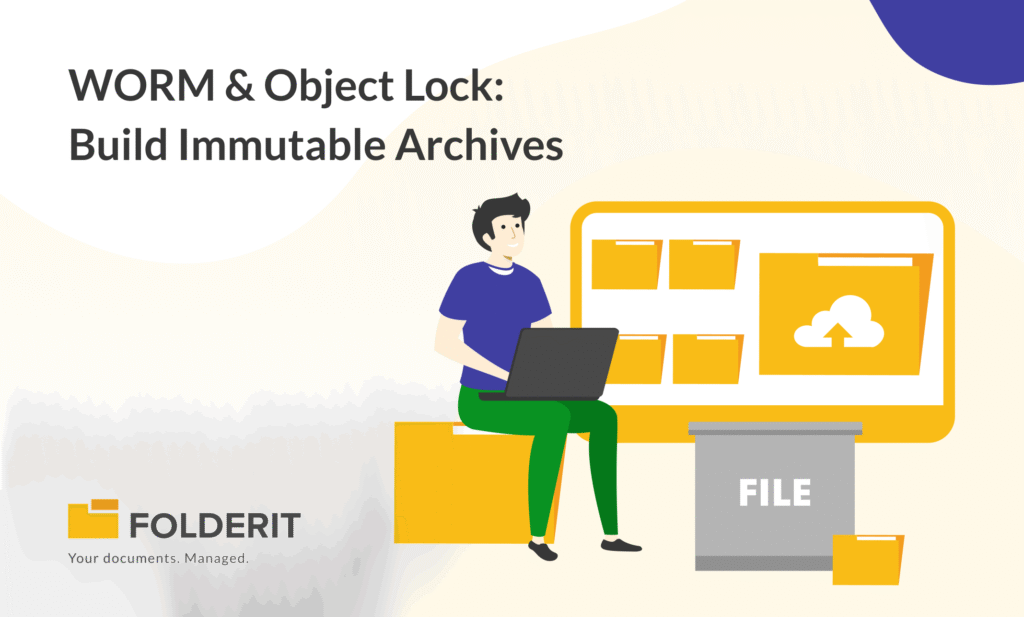A digital vault for important documents is not a fancy folder icon. It’s a way to protect what matters, find it fast, and prove who did what, when. If you’ve ever dug through email threads for a signed contract or wondered whether last week’s file was the final version, you already know why a real document vault beats ad-hoc storage.
Why a digital vault for important documents beats shared drives
Shared drives and email attachments were never built for compliance (ISO 27001, GDPR, Cyber Essentials, HIPAA), audits, or resilience. They expose whole folders, encourage duplicate copies, and leave you guessing about the “latest” file. A digital vault for important documents works differently. Files live behind an application, not on open network shares. That limits the blast radius if a laptop gets infected and lets you block downloads, apply watermarks, or expire access on a set date. In short: a secure document vault keeps collaboration moving while keeping control.
There’s a practical win on day one: search. OCR turns scans into searchable text, metadata gives you business-friendly filters, and relations let you jump from a contract to its addenda without hunting around.
Building a secure document vault: identity, permissions, audit
Locks, shelves, paper trail — that’s the mental model. The “locks” are SSO, MFA, IP restrictions, and granular permissions like preview-only, upload-only, viewer, editor, or custom. The “shelves” are your structure and metadata. The “paper trail” is your audit history and versioning. Put together, a digital document vault makes files easy to use and hard to misuse.
A good online document vault records every action, keeps unlimited versions, and enforces retention by rule. Invite insiders or externals without losing control, and keep access time-boxed so old links don’t become new problems.
Search and metadata inside a vault
Archives should never be a black box. In a digital vault for important documents, multilingual OCR makes scanned PDFs and images discoverable. Custom metadata — counterparty, value, dates, owner, cost center — can be required in specific folders so new uploads arrive complete. You can also link related items (proposal → purchase order → invoice) so context travels with the record. The result: a secure file vault where answers appear in seconds, not meetings.
Workflows and e-signing in your online document vault
Before important files land in the vault of record, they often need review, approval, or signatures. That’s where built-in workflows help. Run approvals in serial, parallel, or a custom mix. Ask for acknowledgements on policies. Send for e-signing without leaving the digital vault for important documents. After completion, download the signed file or a PDF with a summary page showing the outcome, each decision, comments, and timestamps. The whole path is auditable.
Business continuity: how a digital vault resists ransomware
A digital vault for important documents isn’t just about keeping people out; it’s about keeping work going. Because documents are accessed through the browser, not mounted as local drives, typical ransomware has less to grab. Triple-backed-up object storage protects the corpus, and unlimited version history lets you roll back a bad save in seconds. Use preview-only for vendors, apply dynamic watermarking, and you reduce risk without adding friction. That’s real-world resilience.
Deployment choices for your secure file vault
Most teams pick the cloud for simplicity and cost. If you need more isolation, a single-tenant cloud instance in your chosen region gives you your own lane, branding, and configuration. Highly regulated environments can run the document vault on-premises within their own infrastructure. The experience stays consistent across models, which helps with training and change management.
Thinking ahead about AI? If you want document classification, summaries, or a private chatbot over your records, those services can be layered onto a single-tenant or on-prem setup with appropriate GPU resources; while your digital vault for important documents remains the system of record.
A short plan to launch your digital vault for important documents
You don’t need a big project to see value
Start by choosing one high-impact area: policies, contracts, invoices, or project docs. Create the folder structure, define two or three mandatory metadata fields, and add a simple approval or e-sign step before anything becomes the official copy. Invite a pilot group, show them preview and “watch for changes,” and let them work for a week. Adjust, then expand. This is how a digital document vault earns trust quickly.
Immediate use cases
Finance routes invoices through a clear approval path, then auto-files the signed PDF with a summary page. HR publishes policies, collects acknowledgements, and proves who read what. Legal manages contract versions, captures signatures, and sets renewal reminders. Operations keeps SOPs and drawings in one place, shows DWG previews, and blocks downloads where suppliers only need to view. Education shares specific folders with parents; healthcare logs access for compliance. Different teams, same digital vault for important documents.
A vault that people actually use
A digital vault for important documents should fade into the background. People shouldn’t have to think about security to be secure, or about compliance with ISO 27001 to be compliant. They should just find the right file, see what changed, and carry on. That’s the bar. If you’re moving away from shared drives or a tangle of inboxes, this is a good moment to build a secure document vault the right way.
Ready to see it with your own files and structure? Start a free trial or ask for a short demo. A well-designed digital vault for important documents makes everyday work calmer and faster — and that’s the point.






